Agriculture resilient to pandemic’s impact. Indonesian agriculture has emerged as a buttress against the pandemic’s impact on the economy this year, supported by the resilience of farmers and the accounting effects of an incidental shift in the harvest season.
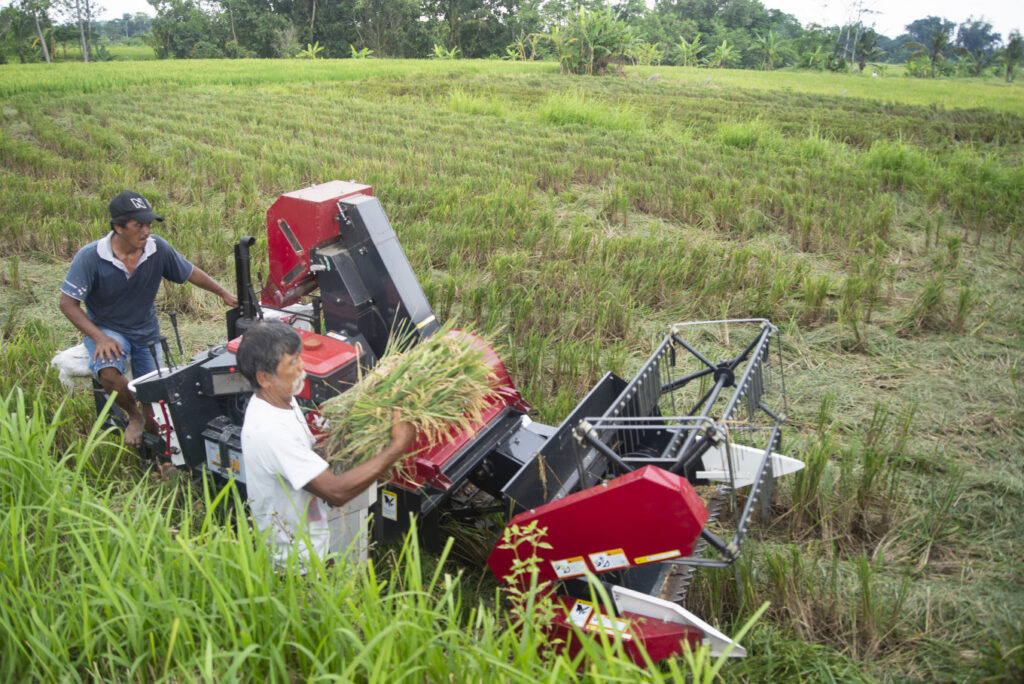
The sector, the second-largest contributor to Indonesia’s economy, managed to grow 2.19 percent year-on-year (yoy) in the second quarter, albeit more slowly than the sector’s yoy growth in the same period last year: 5.3 percent.
Agriculture Resilient
Most other sectors, such as transportation and warehousing, suffered steep declines as a result of pandemic-related restrictions.
Bustanul Arifin, an economist at the Institute for Development of Economics and Finance (Indef), said that while the growth could be partially attributed to the resilience of farmers to the crisis, it was also aided by a delay in the rice harvest following last year’s drought.
“In 2019, when the planting season was delayed to November, we were all scared about the decreasing production. Apparently we’re reaping the benefits now, as the harvest season was in April 2020, in the second quarter,” he told The Jakarta Post on Thursday.
Rice production jumped 57 percent month-on-month (mom) in April of this year–from 6.27 million tons in March to 9.85 million tons in April–according to Statistics Indonesia (BPS) data. Rice production in March was 31.6 percent lower than in March 2019, at 9.17 million tons.
Indonesia’s economy suffered its sharpest downturn since the 1998 Asian financial crisis in the second quarter of this year, as the unfolding global health crisis halted business activities and caused millions to lose their jobs.
The country’s gross domestic product (GDP) contracted 5.32 percent in the second quarter, the largest decline since the first quarter of 1999, BPS announced on Wednesday. The figure was worse than the government’s initial estimate of a 4.3 percent contraction.
Nature’s bounty
Annual growth of Indonesia’s agriculture sector (by percent)
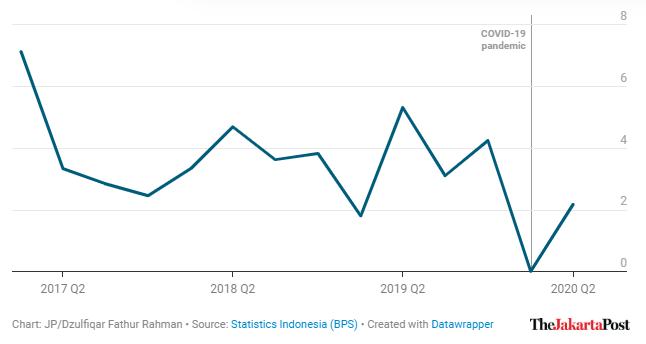
Galuh Octania, a researcher at the Center for Indonesian Policy Studies (CIPS), said that the exemption of agricultural logistics from large-scale social restrictions (PSBB) helped the sector’s supply chain survive the coronavirus pandemic, which put much of the rest of the economy on hold.
She acknowledged the contribution of Agriculture Ministry programs, such as the microcredit program (KUR) for farmers, to the sector’s growth.
The government has earmarked Rp34 trillion (US$2.3 billion) for loan interest subsidies and loan repayment relaxations for farmers and fishermen through the KUR, as well as the UMi and Mekaar programs, among others.
Farmers’ terms of trade rebounded to 100.09 in July from 99.6 in June. A figure of 100 means that farmers’ expenses match their income, and a figure over 100 means their income exceeds their expenses, signalling an improvement in welfare.
Above the line
Indonesian farmers’ terms of trade
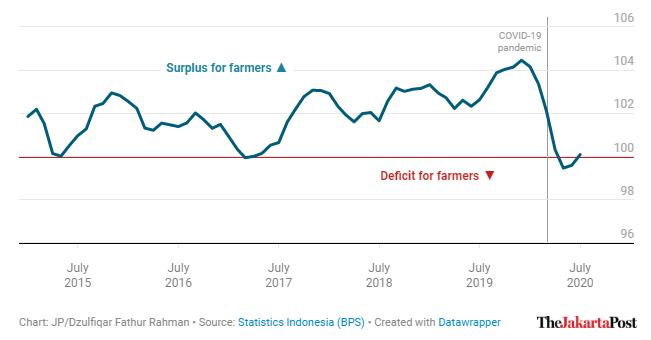
Bogor Agricultural University (IPB) researcher Dwi Andreas Santosa expected agriculture to continue growing in the third quarter, alongside the information and communications sector, which also grew in the second quarter.
“It will still grow because there will be a second harvest season,” he said, noting that the sector was dominated by rice production.
The government has brought rice-planting forward to May and June this year to ensure a sufficient supply during the pandemic. It expects the harvest to occur in August and September.
Indonesian farmers usually plant and harvest their rice later in the year, when rainfall increases, after the first planting season in March.
The government noted on Thursday that despite employing the majority of the Indonesia’s workforce, agriculture still made a minimal contribution to the country’s tax revenue.
“The agricultural sector contributes relatively very little to tax revenue,” said Febrio Kacaribu, the head of the Finance Ministry’s Fiscal Policy Agency (BKF), in a virtual press conference.
“We want a proportionality. A large sector that generates large added value must be able to contribute proportionally to tax revenue.”
The Finance Ministry recently issued a regulation that offered the option of imposing a 1 percent value-added tax (VAT), based on the sale price, on select agricultural products. The government normally levies a 10 percent VAT.
The VAT targets agricultural businesses that have at least Rp4.8 billion in annual revenue. The government has said the measure is meant to give legal certainty regarding taxation in agricultural sector.
As of May, the nation’s total tax revenue had fallen 10.8 percent year-on-year to Rp444.6 trillion as almost every economic sector contracted. The government expects the state budget deficit to reach 6.34 percent of GDP this year. Agriculture resilient to pandemic’s impact (Dzulfiqar Fathur Rahman, The Jakarta Post)


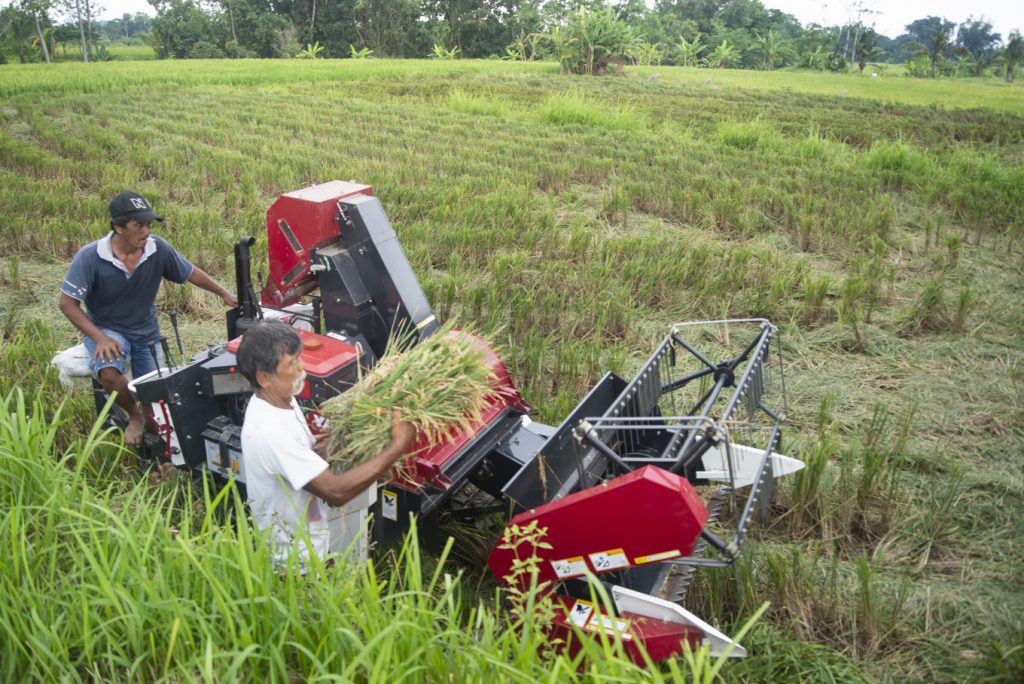

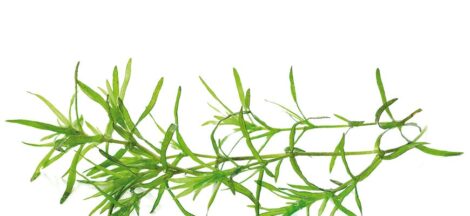
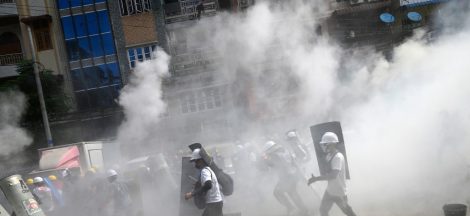
 Penghargaan Teknologi Inovasi bagi Jababeka dan Sinarmas dari Esri Amerika
Penghargaan Teknologi Inovasi bagi Jababeka dan Sinarmas dari Esri Amerika 